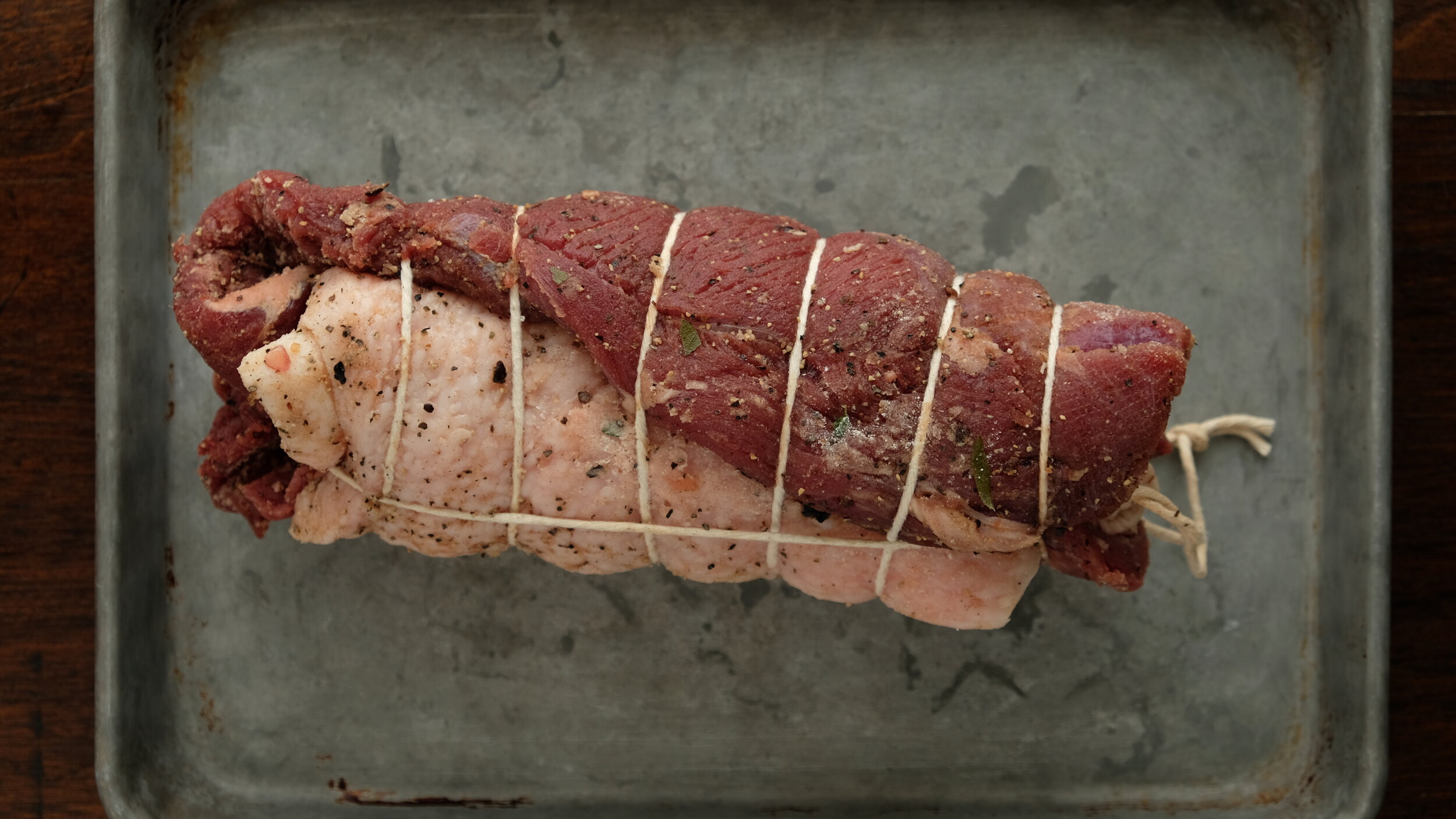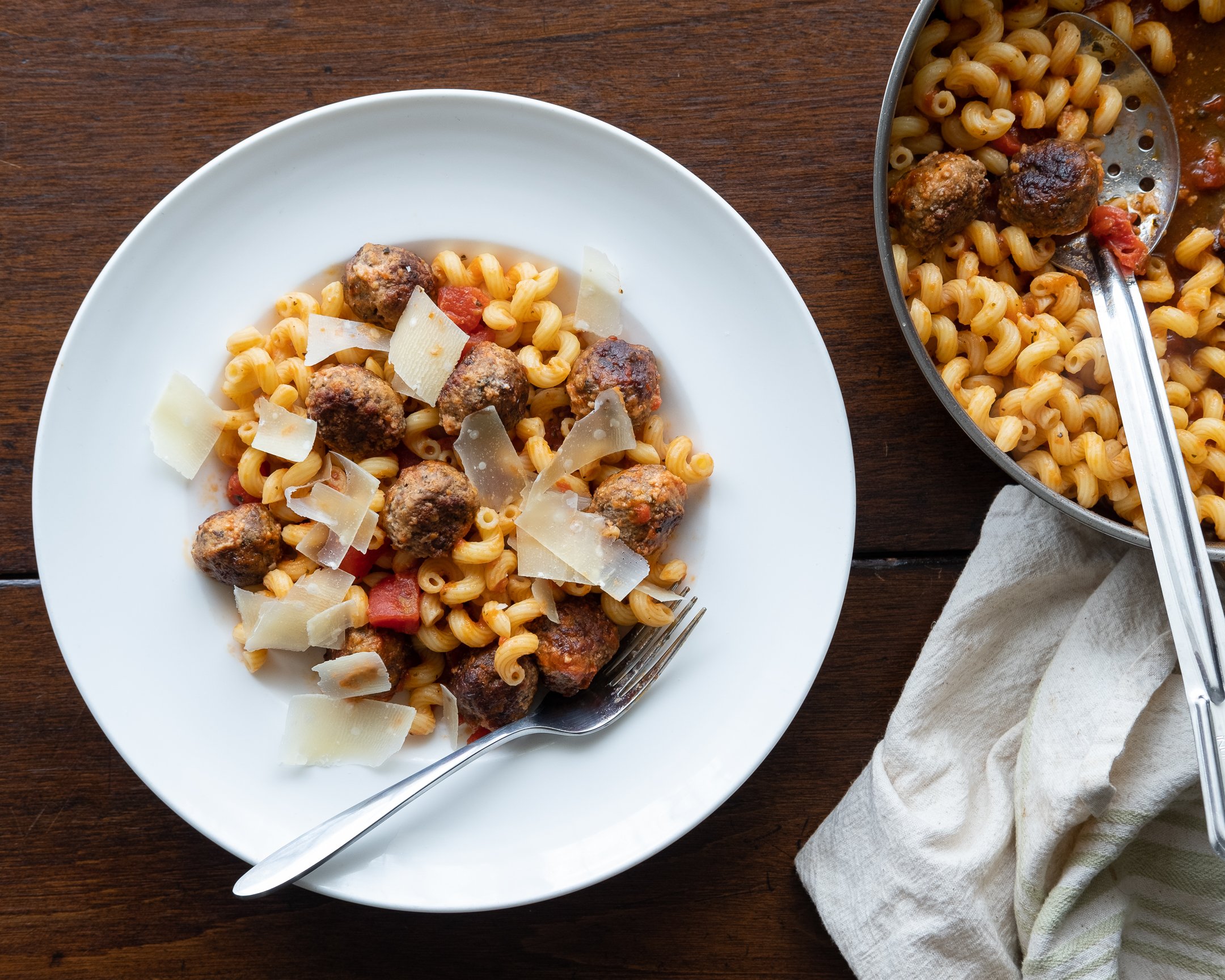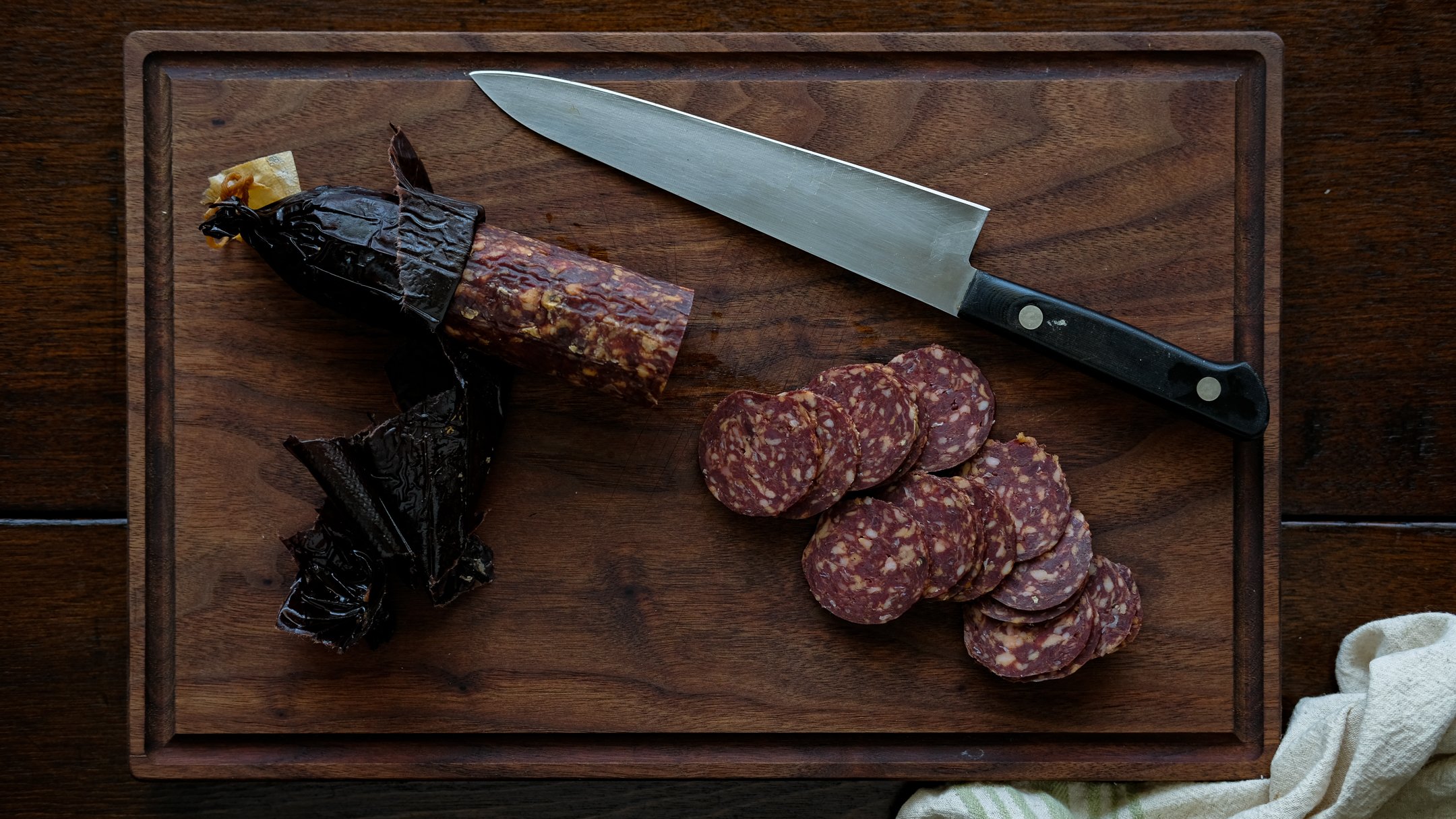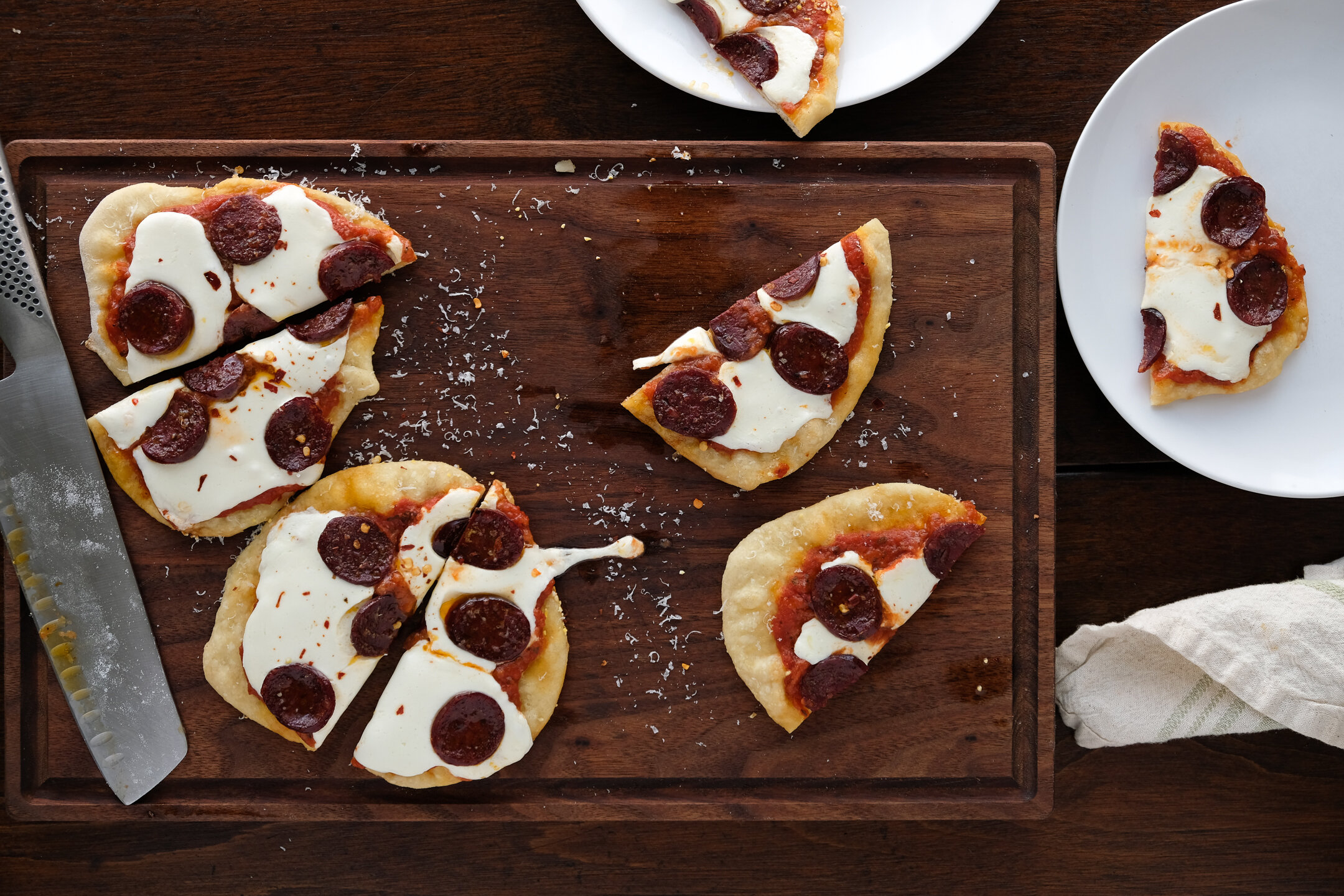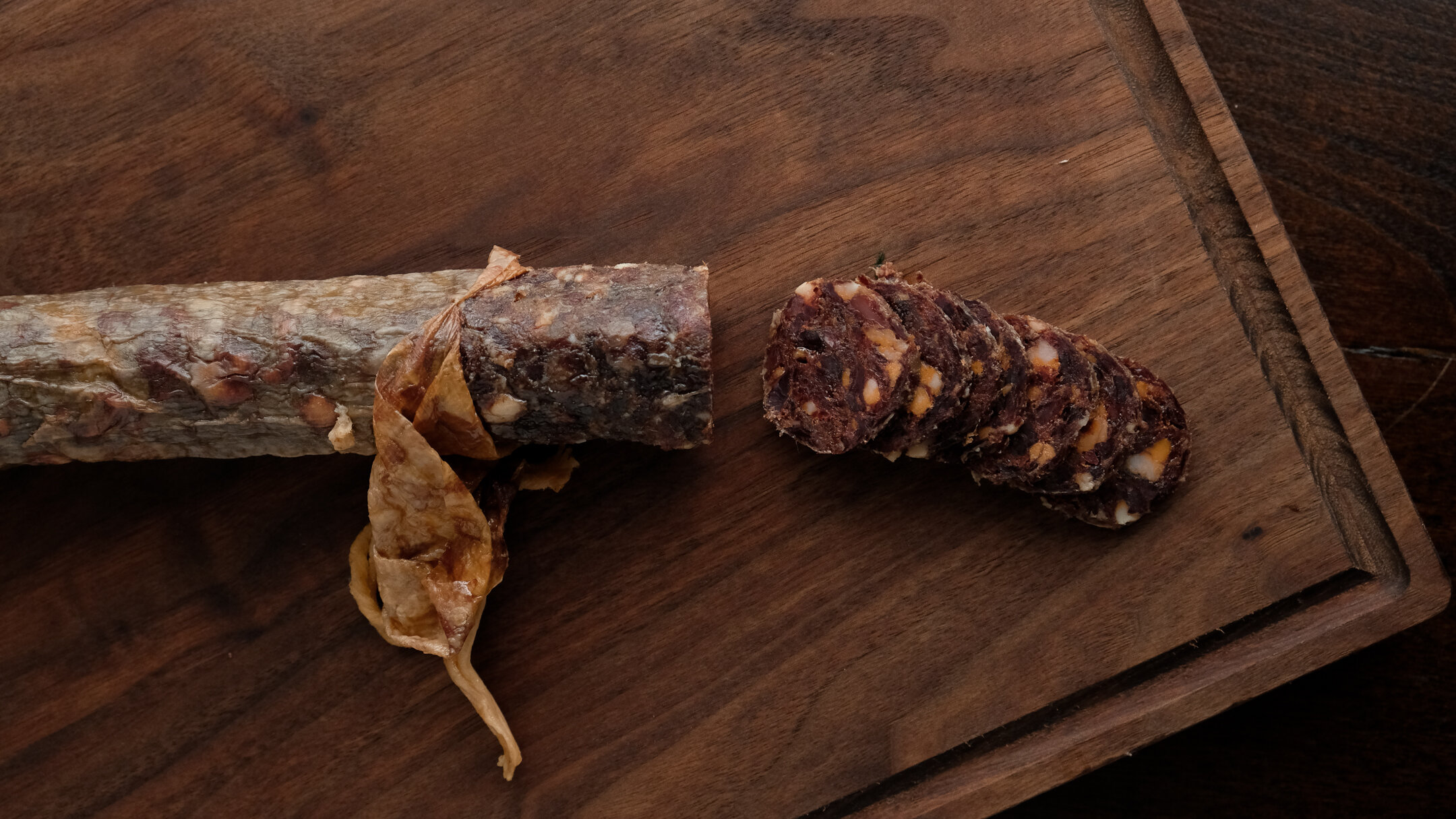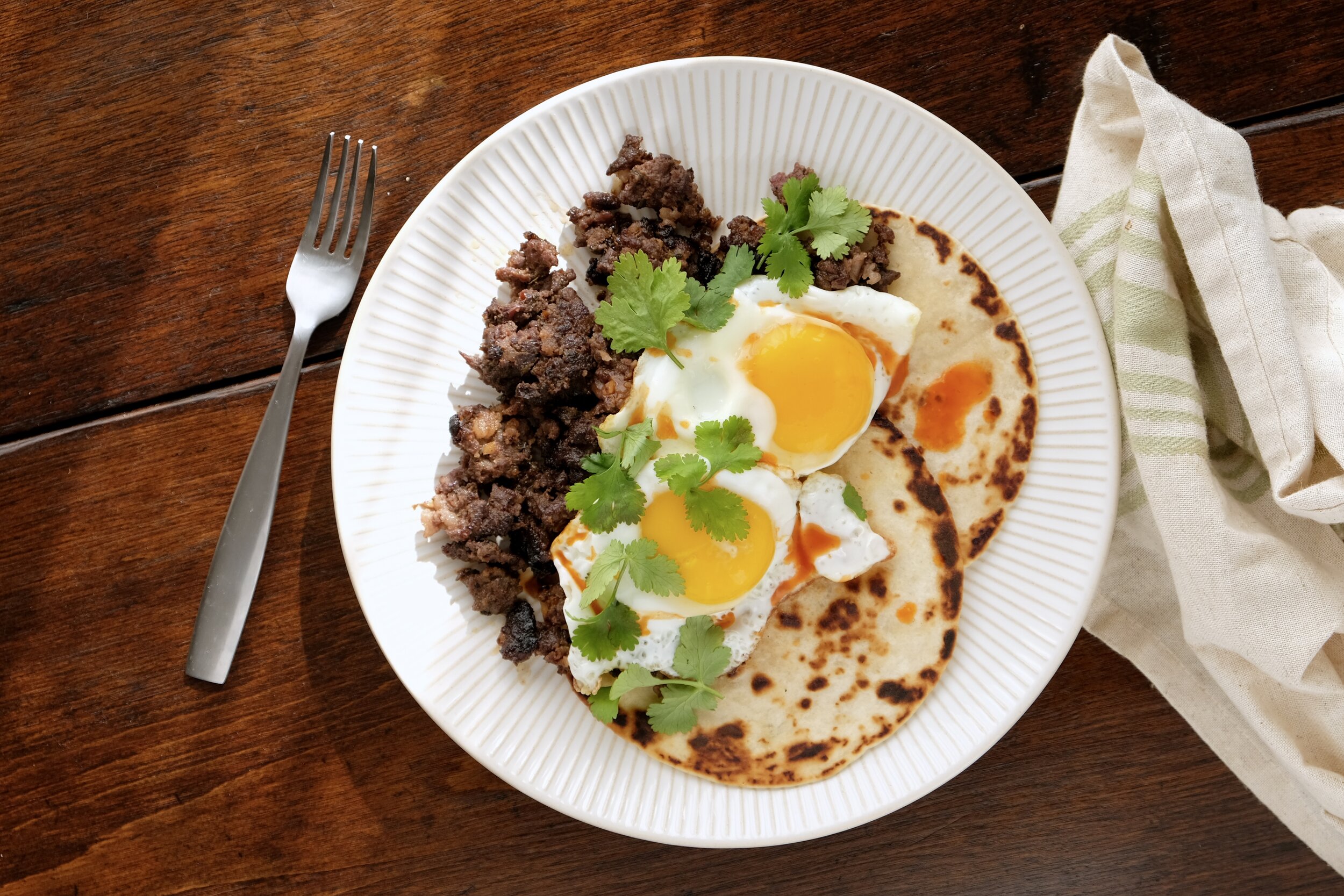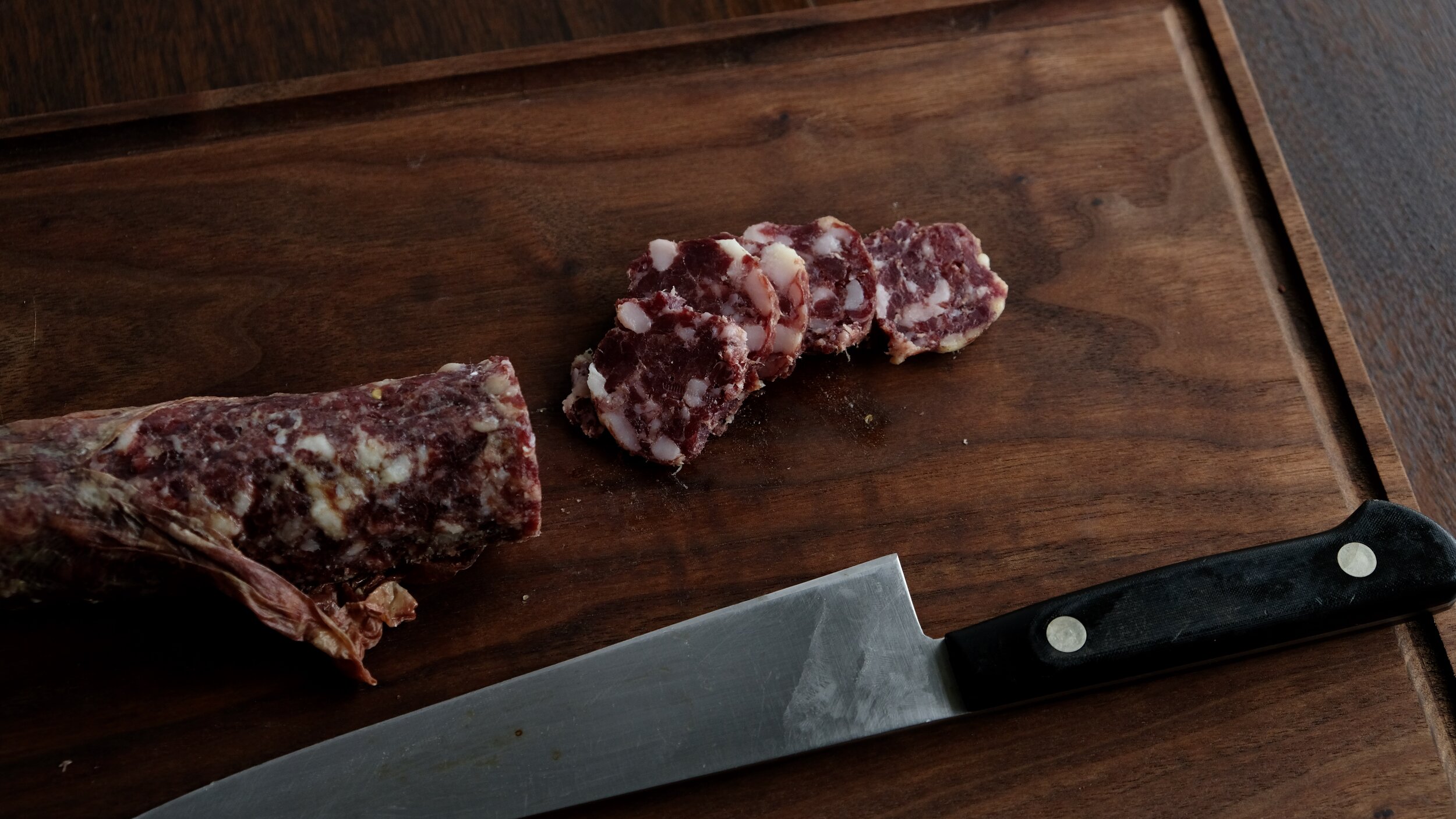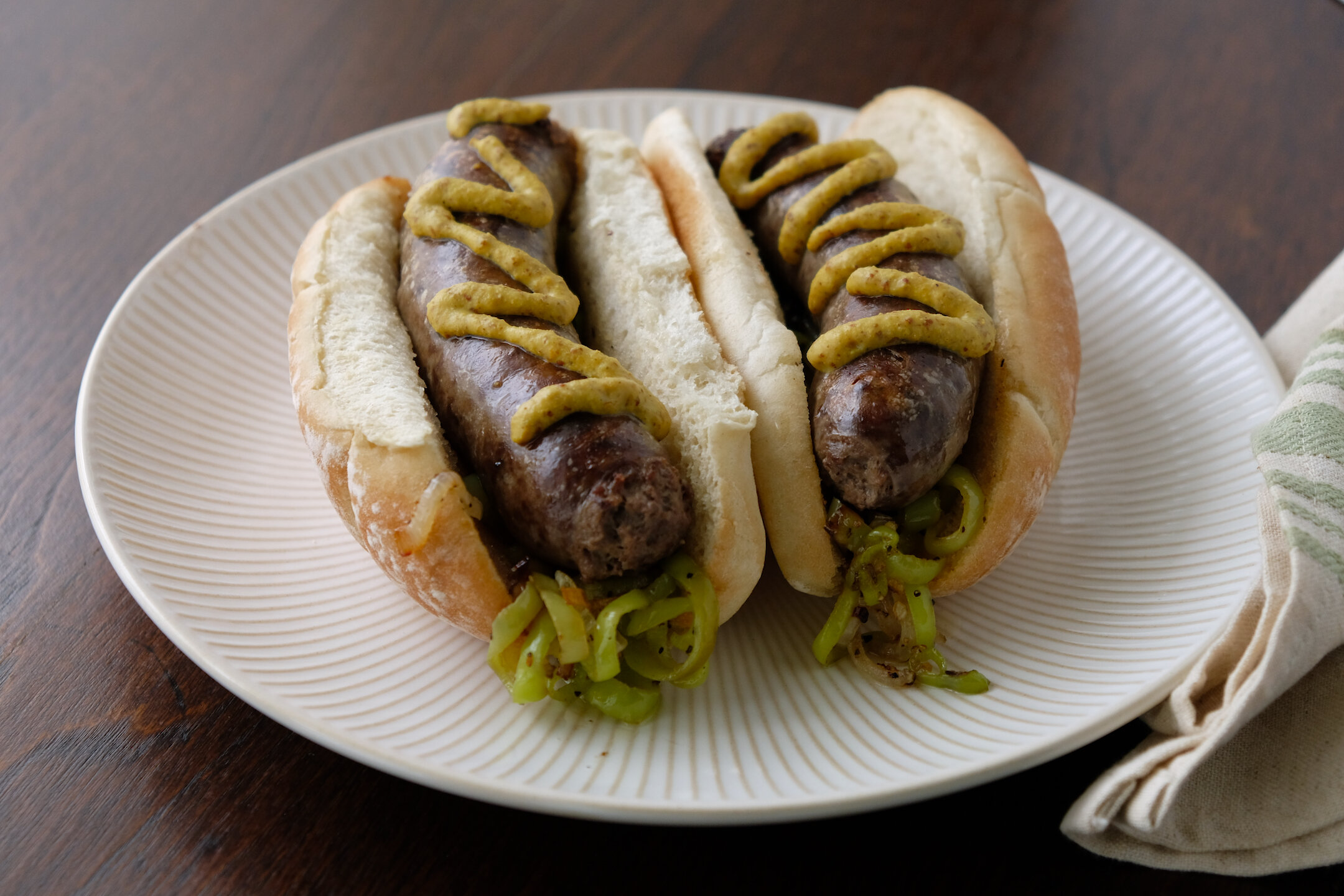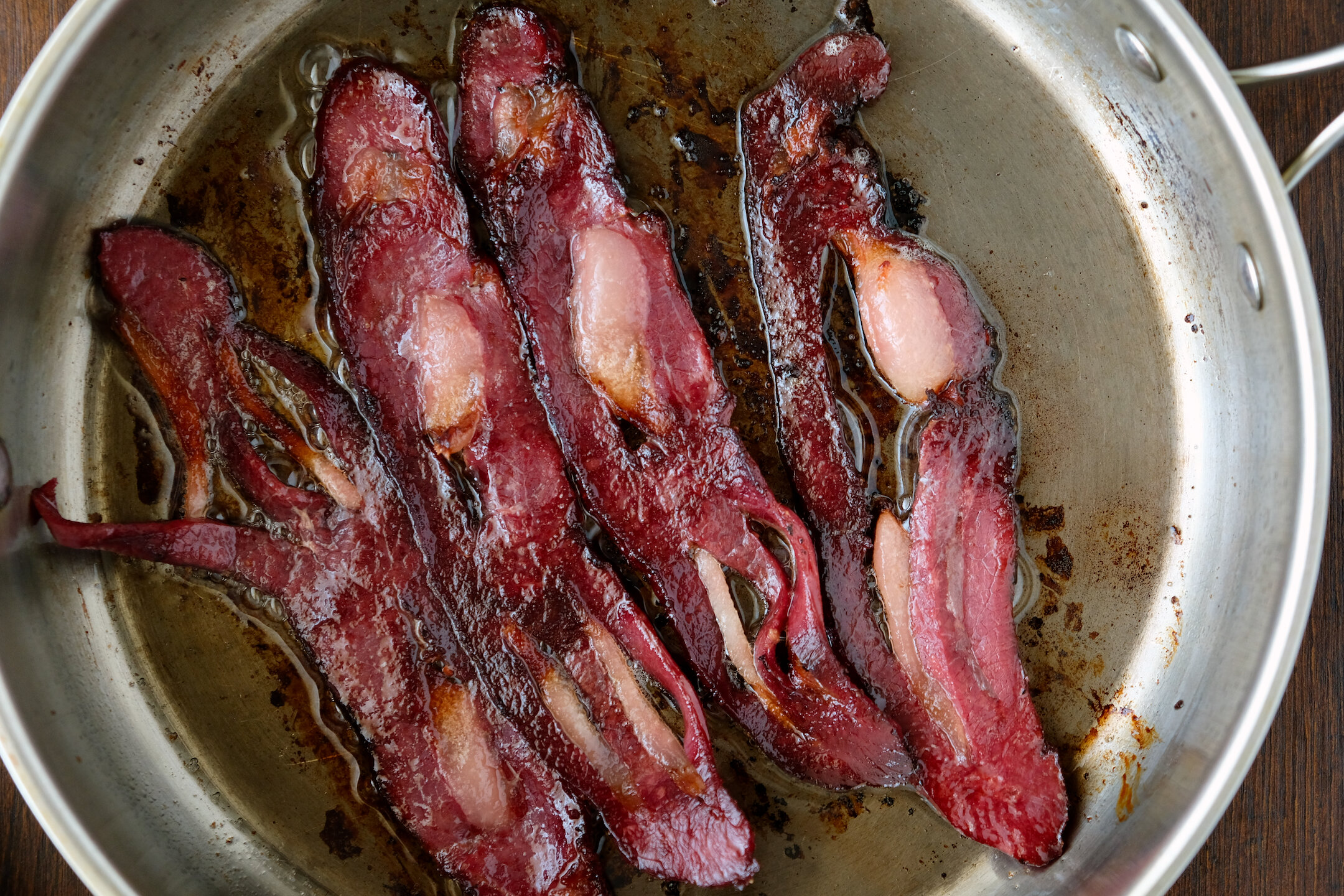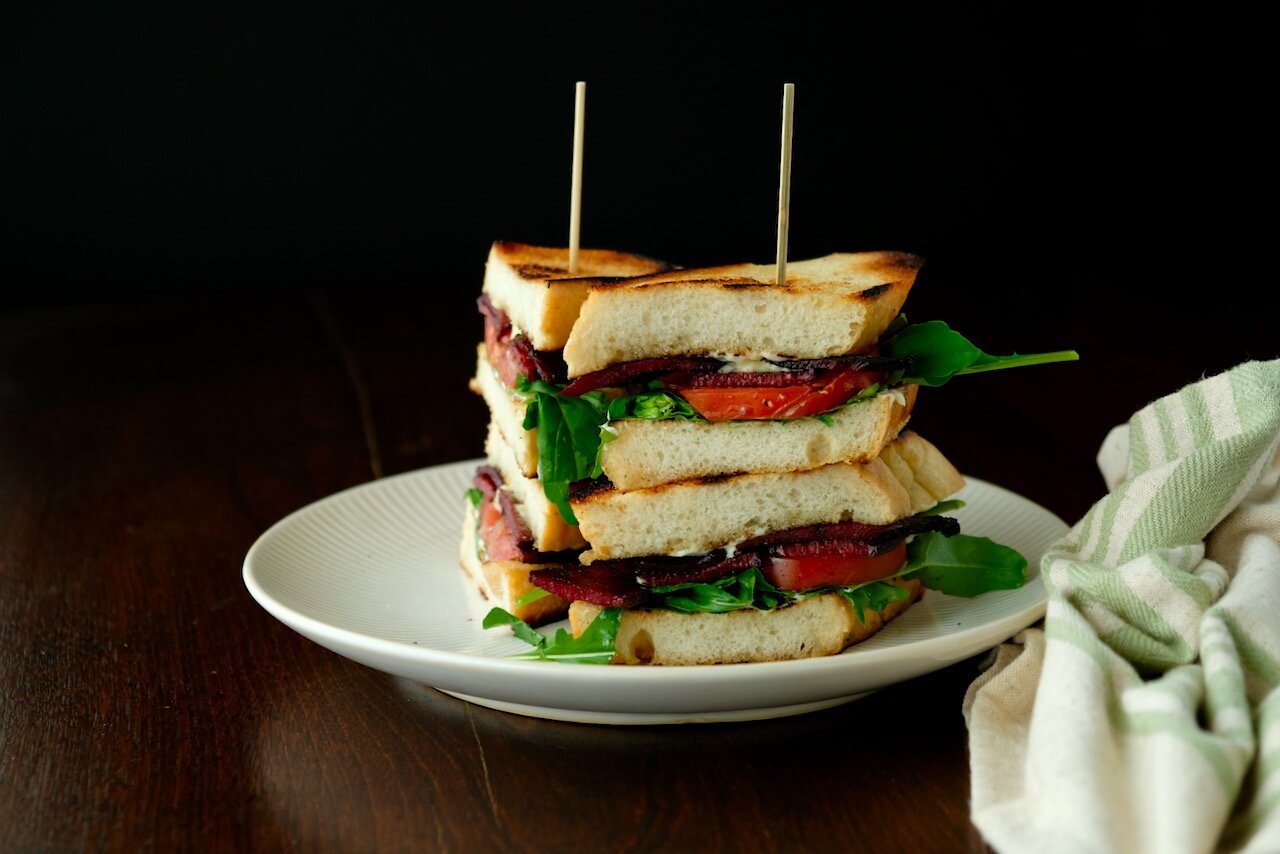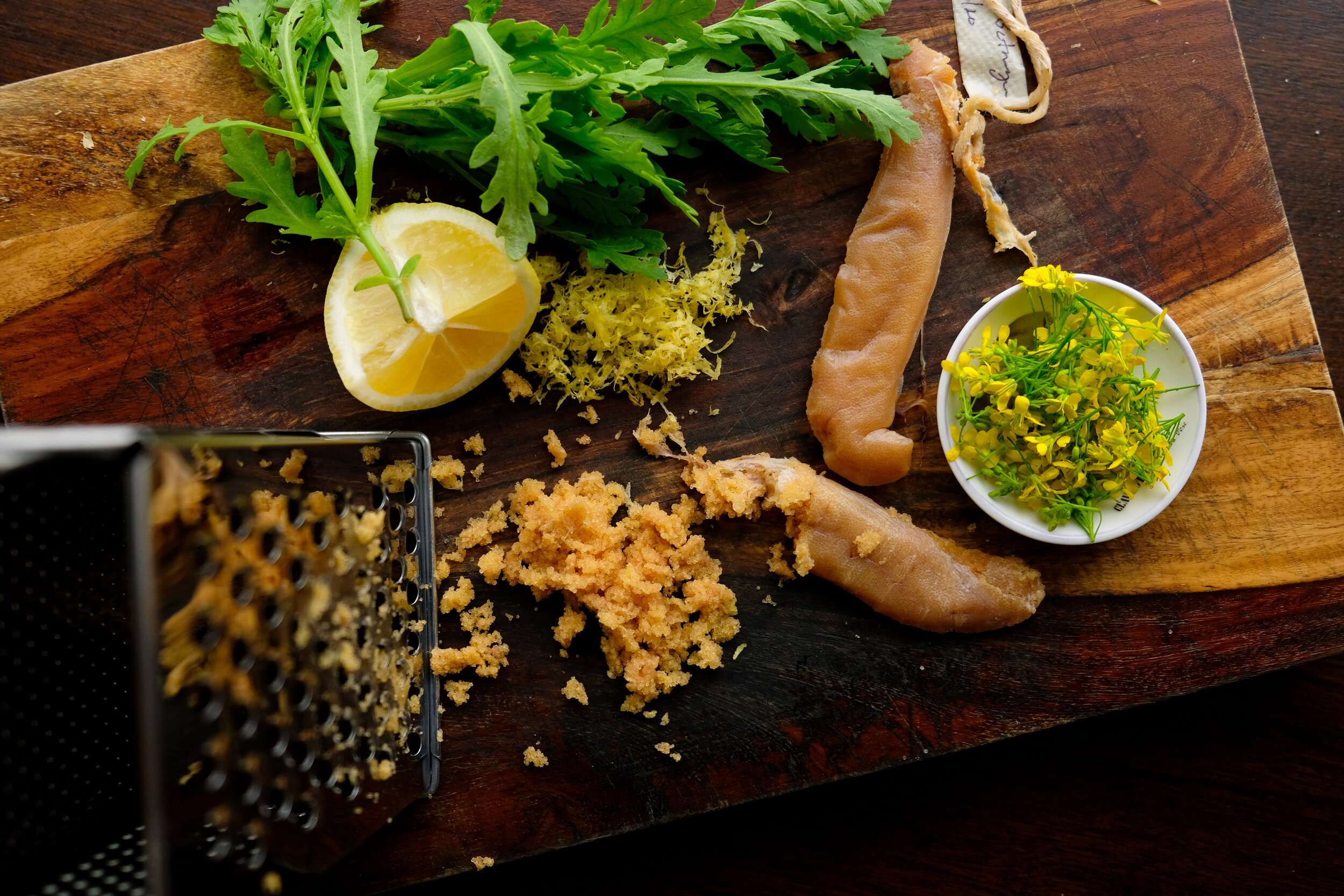Venison Pancetta

Wade and I make every effort to source all our own proteins from the wild. We don’t buy meat from the grocery store, and with the exception of the rare meal at a friend or family member’s home, we try not to eat domesticated meat. A lot of it has to do with our concerns about the implications of the industrialized food system, but that doesn’t quite sum it up- if that was our only concern, we could go vegan, or only buy meat from local farms. Beyond minimizing our impact, sourcing our own food speaks to our desire to be challenged, provide for ourselves, and forge a deeper connection to the land and waters around us. The inherent variability of wild game keeps us on our toes, and the memories we savor along with the meal make every dish taste that much sweeter. I don’t miss eating grocery store meat. The brine-plumped chicken and wan magenta steaks all lined up in their styrofoam trays don’t make my mouth water or feed my soul. The challenge of feeding ourselves solely on wild game has made us better, more motivated hunters too- having real stakes on the table forces us to play harder and smarter to keep our bellies full.
All that being said, we do make one very notable exception to our wild-game-only diet: cured pork and pork fat.
Where we live in Virginia, we aren’t lucky/unlucky enough to have a huntable population of wild pigs running loose. And yes, a trip south to hunt feral pigs is in order one of these days, but until then, we make do with pork humanely raised by a local farm. It doesn’t fit neatly into our wild food ethos, but then, it doesn’t have to. We imposed these values on ourselves, and we’ve come to the conclusion that, wild or not, pork has a necessary place in our larder. There are just some things, like sausage, that aren’t the same without the addition of pork fat.
I think most hunters probably don’t think twice about their use of pork fat, but when you’ve drawn a line in the sand like we have, ideological purity comes into the conversation with a quickness. Can I justify using it? Do I even need to justify it? Would talk of eliminating charcuterie from my diet be enough of a tragedy that it would forestall any conversation about how, exactly, that sausage is being made?
I think back on the conversation we had surrounding our venison bacon, where we recreated the silky richness of pork bacon by bonding pork fat to lean venison, then curing and smoking it. It’s an unusual recipe to be sure (not a whole lot of home cooks use meat glue with any regularity) and it opened up a dialogue about when, exactly, a wild game dish stops being about wild game. My answer is- I’m not sure. I don’t know what it was about that recipe in particular that seemed to toe the line for wild game cooking. It couldn’t be the pork fat- all but one of our sausage recipes calls for it. I think it has more to do with the intent of the recipe, and that by creating a dish that aspires towards the domestic, we had left our wild game ethos behind in favor of the quotidian.
Honestly, I get it. As someone who loves wild animals, wild places, and especially wild meat, I get my hackles up about recipes intended to disguise the natural characteristics of the game. Soda marinades, saltwater soaks, bacon-wrapped everything and “wife approved” recipes bum me out, big time. I don’t ever want to hide the meat of an animal whose life I’ve taken behind the guise of “tastes like chicken.”
And yet.
In this recipe, we’ve made another venison and pork fat fused dish. Pancetta is similar to bacon, but it’s not smoked and has a heavier focus on aromatics. It would be easier to just buy some humanely raised artisan pancetta, but we have venison and pork fat, and it's fun to attempt something that blurs the lines and challenges the senses. This may not be the purest venison cookery around, but I’m hoping the next step in trendy wild game cooking is “wild game where you don’t expect it” and this certainly fits the bill. Maybe I can justify this dish by expounding on the challenge and experimentation that went into it, figuring out how to make venison act like pork, or maybe I don’t need to justify it at all.
What I can tell you is that yes, we’ve fused venison and pork fat together with meat glue. It’s delicious.
We double butterflied a venison bottom round and trimmed slabs of pork fat to roughly match the shape. Using meat glue (Activia RM), we fused the meat to the fat and cured it in the fridge. Once done curing, we rolled and tied it as tight as possible and hung it to age in a curing chamber for a week or so.
We like to use it in place of Virginia ham in recipes, or crisp it up and sprinkle it on pastas or anything else that needs a pop of salt and fat.
Venison Pancetta
As always, we use metric measurements and go by percentage weight for our sausage recipes. We do this to make the recipes easy to scale and replicate exactly, batch after batch. If you’re thinking of getting into sausage making and don’t own a kitchen scale, please do yourself the favor of buying one. They’re inexpensive relative to the cash outlay of all the other equipment you’ll need to pick up, and will save you a lot of effort in terms of scaling recipes into imperial measurements (and potentially averting recipe failure). To measure your ingredients, first weigh the meat you are using, and then calculate the weight of all the other ingredients based on the weight of the meat.
Prep time: 1 hour
Ingredients:
100 % meat (venison bottom round and whole slabs of pork fat, roughly 60:40)
Activia RM
2.3% salt
0.25% instacure #1
1.5% brown sugar
0.5% juniper berries, dried, crushed
0.2% nutmeg
1% black pepper, coarse grind
1-2 bay leaves, crushed, per ~1000g
2 cloves garlic, fresh, minced, per ~1000g
2-4 sprigs of thyme, fresh, rough chopped, per ~1000g
Method:
Butterfly the bottom round to make an evenly thick, flat, rectangle-ish shape (see photo). Trim the pork fat to fit the same shape. Dust both the venison and pork fat with meat glue and lay the fat over the meat. Combine the remaining cure ingredients and rub into the meat.
Place the meat and fat slab in a large vacuum bag, add in any of the cure that didn't stick and vacuum seal. Refrigerate for a week. Rotate the bag daily.
After 7 days, remove the meat from the bag and lightly brush off the rub with a clean, damp towel. Be careful to not separate the fat from the meat. Some of the rub will not come off, that's fine.
Roll the meat into a cylinder as tightly as possible- you don't want air gaps in the center. Use butchers twine to tie off every ~2”. Hang in a cure chamber for around 7 days. You want high humidity to prevent the meat from drying out too much. Once the outside is mostly dry, but still has a bit of tackiness to it, pull it from the chamber. The outside of the meat will have darkened slightly. If you end up with very dry spots, vacuum seal and refrigerate for 2-4 weeks to equalize the moisture content.
Slice thin crosswise and cook just like you would cook pancetta or bacon.








